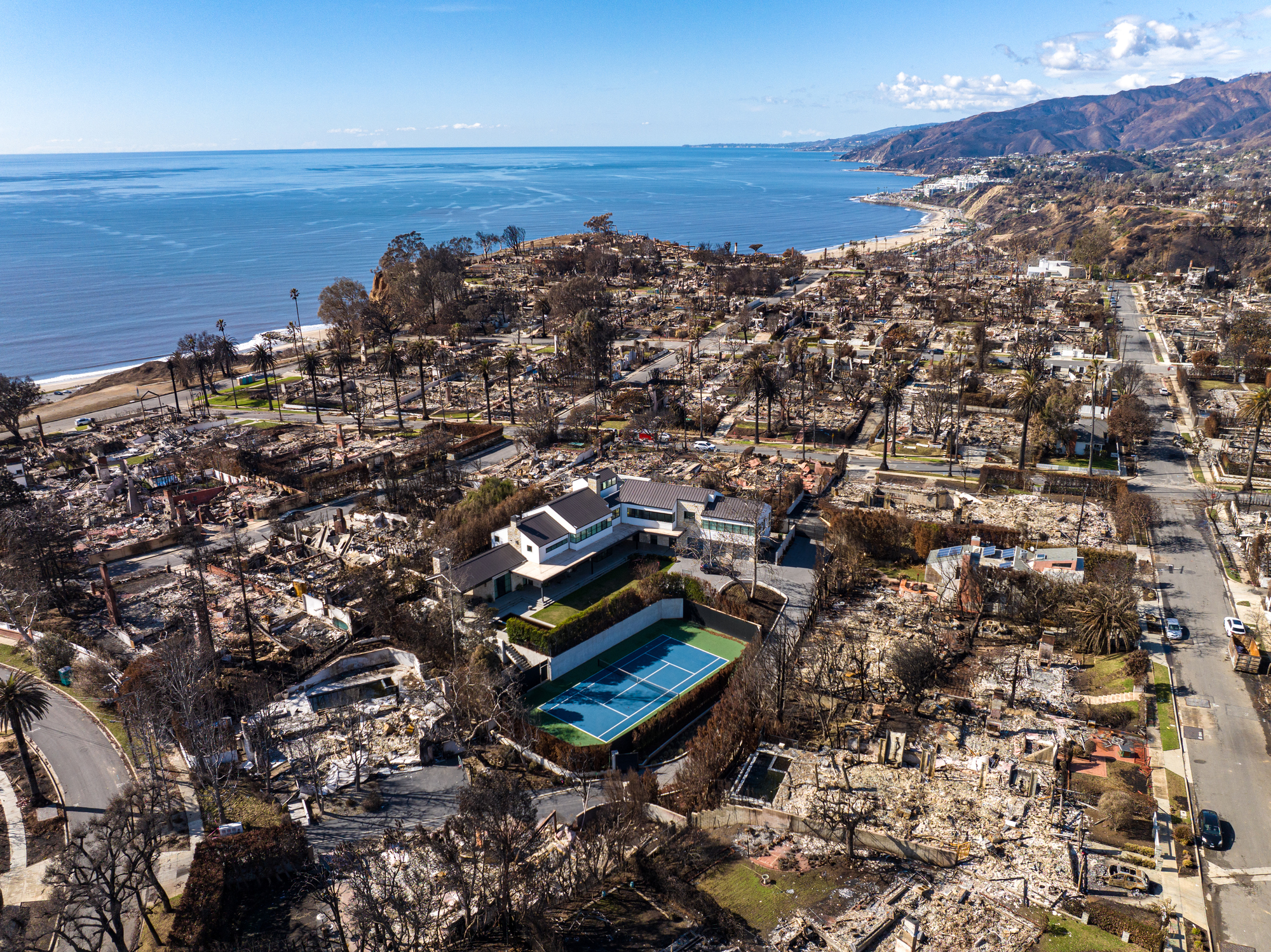Fires in the Greater Los Angeles area have been burning for nearly a month, and they have cost the state billions in damages. A variety of factors triggered what may be the costliest natural disaster in United States history.
Setting the stage
Climate change has affected California in numerous ways, intensifying heat and droughts while bringing in deluges of precipitation through atmospheric rivers. Both of these phenomena create the conditions for dangerous and massive wildfires.
Heavy precipitation brings in plant growth, which actually reduces fire risk. However, when droughts intensify or a heatwave materializes, these plants can dry up and turn into kindling—which is exactly what happened in Southern California.
This brings us to the present, where drought conditions in California have persisted into January—leading to more wildfires starting well past the end of California’s fire season, which typically ends in November.
Finally, the Santa Ana winds, the seasonal katabatic winds of the region, were exceptionally strong—there were some instances when they were over 80 mph, matching the force of a Category 1 hurricane. Wind can cause wildfires to spread quickly, and these hurricane-force winds played a major role in the Greater Los Angeles fires becoming some of the most damaging in the state’s history. The specific causes behind each fire are currently under investigation.
The damage as it stands now
At the time of this writing, three fires remain uncontained; the Palisades fire, which burned over 23,000 acres and destroyed over 7,500 structures; the Eaton fire, which burned 14,000 acres and destroyed over 10,000 structures; and the Hughes fire, which burned 10,000 acres and destroyed no structures.
It should be noted that while these fires are close to being contained and the other fires are presently contained, that doesn’t mean they have stopped burning. In addition, whether the fires destroyed no structures or thousands of structures, they still have dealt a tremendous amount of environmental damage in the region through the destruction of wildlife and smoke.
Reporting from forecasting service AccuWeather provides a sketch of the damages so far: the destruction of entire neighborhoods, prime real estate, expensive celebrity homes and overall economic disruption is expected to cost between $250-$275 billion. These damages and losses surpass even that of 2024’s Hurricane Helene—as for insured losses, the current estimate is between $20-$45 billion, with some experts noting that this is indicative of a lack of insurance penetration in California.
All of this means that the lives of hundreds of thousands of Californians have been disrupted by these fires: it means lost homes, lost wages and even lost lives.
To add insult to injury, in a violation of the state’s anti-gouging rules imposed by Gov. Gavin Newsom, rents have increased by 20% in LA County according to Fortune, with some specific properties increasing rents by 166% to 266%. There also are fears of gentrification when these communities rebuild, which has been demonstrated during previous fires—the cost to rebuild and to stay may be too great for some people.
Update: As of March 10, 2025, Lloyd’s of London expects $2.3 billion in net losses from the wildfires.
State and federal aid
Aside from private entities making contributions to fire relief efforts, state relief efforts include Gov. Newsom allocating $2.5 billion to help rebuild.
Meanwhile, President Donald Trump is threatening to condition aid to California by forcing it to implement stricter voter ID laws and to change its current water policies—both of these rules from California are wholly unrelated to the damage caused by the fires, with local publications noting that this conditioning of aid is a deliberately punitive response to the state’s percieved liberal values.
Wildfires and insurance—what does it mean in the Northeast
The California fires offer a glimpse of what could happen in the Northeast. Currently, the Northeast is experiencing prolonged drought conditions, and there was a host of fires across the region during late autumn last year. Climate change is the likely culprit behind these unusually dry conditions or it would have at least exacerbated natural dry conditions in the region.
California was considered a canary in the coal mine for private insurers and their behavior in response to increasing wildfires. Several large insurers, like State Farm and Allstate, were either canceling policies or not renewing them in the past few years. The California Department of Insurance even put a moratorium on cancellations and nonrenewals in response to the present fires.
Insurance agents should pay close attention to these local and national trends. Often, wildfires are covered in homeowners insurance, but now they may require a separate policy in areas prone to these disasters—if private options are unavailable for your clients, then they would have to be directed toward their state’s Fair Access to Insurance Requirements plan.
As an independent insurance agent, the wildfires in the Greater LA County should be considered as a warning for things to come in an increasingly warming world. Regardless, encourage your clients to keep their homeowners policies up-to-date and adopt or enhance their fire safety measures.
Matt McDonough is PIA Northeast's writer, editor and content curator. Matt joined PIA Northeast in September 2023. Before that, he had been an editor for the online entertainment magazine Collider from 2021-23 as a copy editor for its lists section. Matt entered the world of journalism at his alma mater, SUNY New Paltz, writing and reporting for the college's student run newspaper, The New Paltz Oracle. He graduated from SUNY New Paltz with a Bachelor of Arts in English and a minor in Creative Writing in 2020.







